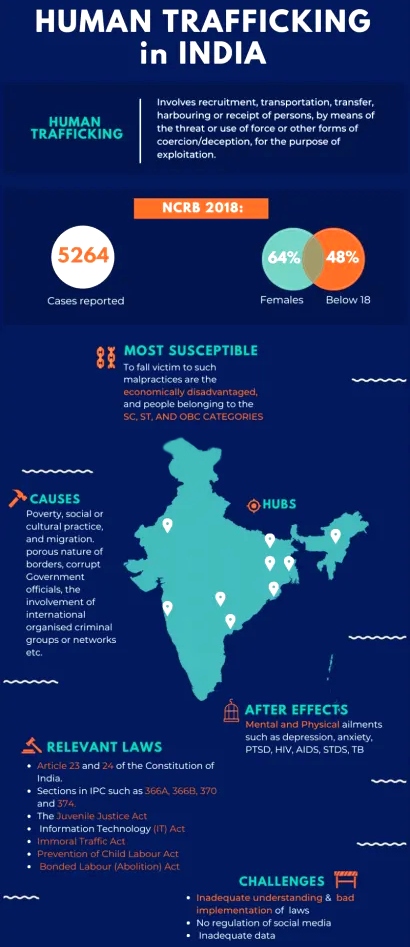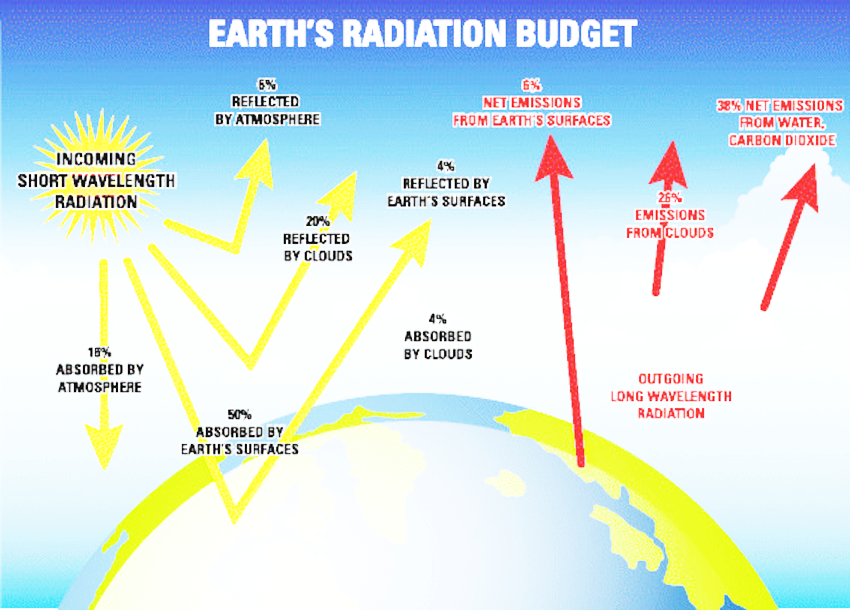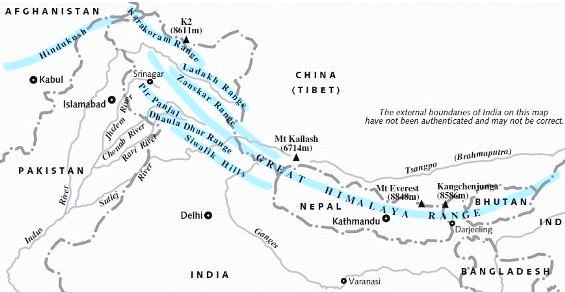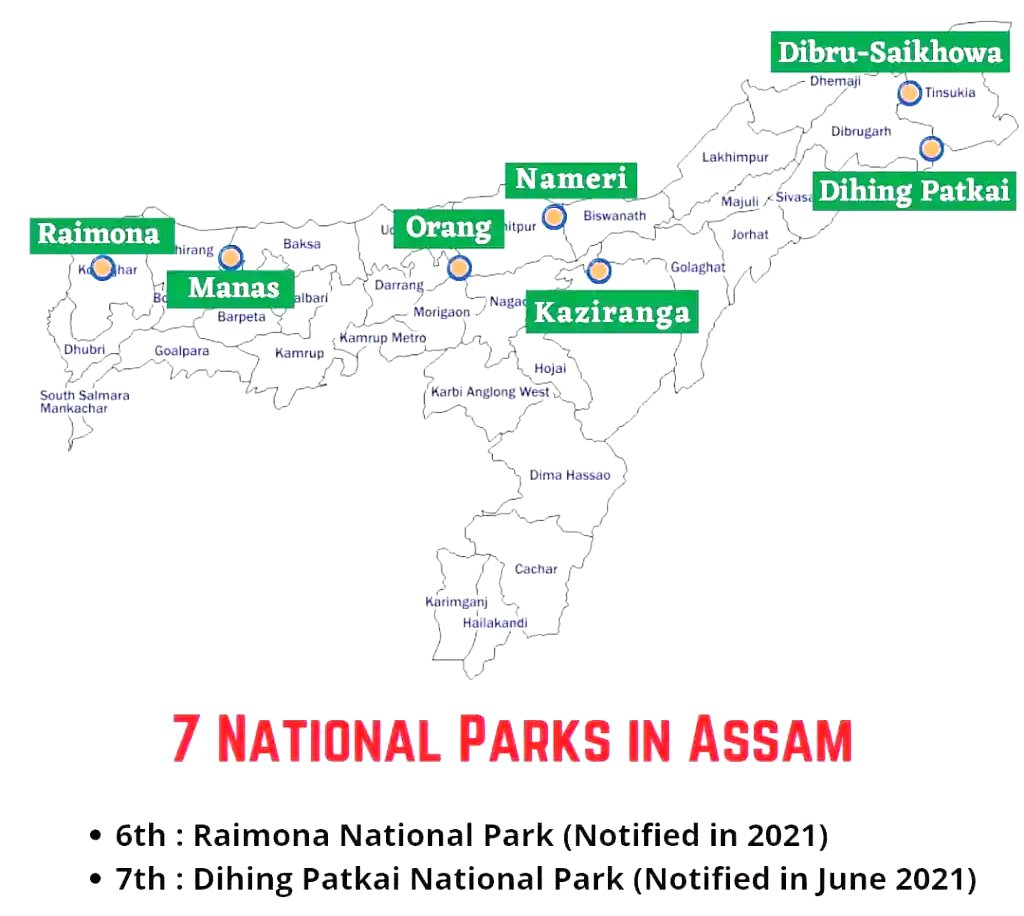Farm Loan Waiver
For Prelims: Non-Performing Assets, Agriculture Sector, Farm Loan Waiver.
For Mains: Banking Sector & NBFCs, Issues Relating to Development, Government Policies & Interventions, Growth & Development, Farm Loan Waivers and Related Issues.
Why in News?
Recently, the congress (political party) has promised a Waiver for Farm Loans for the 2022 Uttar Pradesh Assembly election.
What is a Farm Loan Waiver?
- Farm loan waivers are customised schemes announced by states to help the peasants.
- When there is a poor monsoon or natural calamity, farmers may be unable to repay loans. The rural distress in such situations often prompts States or the Centre to offer relief — reduction or complete waiver of loans.
- Essentially, the Centre or States take over the liability of farmers and repay the banks. Waivers are usually selective — only certain loan types, categories of farmers or loan sources may qualify.
- Loan waivers, originally intended for a one-time settlement. However, the past two decades have seen such schemes announced with increasing regularity, signalling the chronic distress of the agricultural sector in India.
- Though these demands seem more legitimate in the wake of the loss of livelihood due to lockdown amid Covid-19, yet such loan waivers may prove detrimental to the banking system and credit culture.
What is the History of Farm Loan Waivers in India?
- The first recorded instance of granting loans to peasants in medieval India dates back to the regime of Muhammad-bin-Tughluq (1325-51) so as to ameliorate the distress suffered by villagers.
- However, faced with rebellion and famine, these loans were written off by Firoz Shah Tughluq, the subsequent ruler.
- There have only been two nationwide loan waiver programmes in India after Independence: in 1990 and 2008.
- The first nationwide farm-loan waiver in independent India was implemented in 1990 by the VP Singh-led government. It cost the exchequer Rs 10,000 crore.
- In 2008, the Agricultural Debt Waiver and Debt Relief Scheme, implemented by the UPA government, involved an outgo of Rs 71,680 crore.
- Since then, there has been a wave of such schemes by different State governments.
What is the Rationale Behind Waiving Off Farm Loans?
- Small Land Holding: More than 85% of small and marginal farmers in India possess less than 1-2 hectares of holdings and lack basic inputs for farming.
- Dependency on Monsoon: In India, the crop yield and production are highly dependent on monsoon.
- Need of Credit: In this context, the credit is a critical resource to farming households for carrying out crop production and meeting consumption & daily-life expenses.
- Debt Trap: Farmers invest heavily in crops by taking loans. If the crop fails due to lack of rains or insufficient market demand, farmers will get trapped in debt. Due to this, there has been an increase in farmer suicides.
- Thereby, waiving farm loans address this humanitarian crisis.
What are the Issues Related to Farm Loan Waivers?
- Reputational Consequences: Loan waiver schemes will disrupt credit discipline as farm loan waivers may act as a temporary solution and can prove to be a moral hazard in future.
- This is because those farmers who can afford to pay their loans might not pay it expecting a waiver.
- Free Rider Problem: Some farmers may take loans even if there is no need, in the hope of the next loan waiver scheme. This will impact the farmers who are genuinely in need of loans.
- Decline in Formal Access to Credit: After the implementation of debt waiver schemes and subsequent losses to the banking industry, banks will be reluctant to lend further to the farm sector.
- This leads to a rise in farmer’s dependence on informal sector lenders.
- Impact on Banking Sector: A report by the Indian Council for Research on International Economic Relations stated that the 2008 farm-loan waiver led to three-fold increase in non-performing assets of commercial banks between 2009–2010 and 2012–2013.
- This further affects credit-deposit ratio and risk-weighted capital adequacy ratio, return on assets and economic value of equity of banks.
- This downgrades the ratings of banks in particular and destabilises the functioning of the credit market in general.
- Against the Interests of Depositors: Banks receive money from the depositors and lend money to borrowers under different contracts and agreements.
- Thus, the loss to the bank, due to loan waivers, is directly or indirectly against the interests of the depositors.
- Moreover, banks being custodians of depositors’ money, need to be guided primarily by the protection of depositors’ interests.
What Should be the Way Forward for Farm Loan Waivers?
- It appears that loan waiving can provide a short-term relief to a limited section of farmers, it has a meagre chance of bringing farmers out of the vicious cycle of indebtedness.
- There is no concrete evidence on reduction in agrarian distress following the first spell of all-India farm loan waiver in 2008. In the longer run, strengthening the repayment capacity of the farmers by improving and stabilising their income is the only way to keep them out of distress.
- Lasting solutions like building irrigation capabilities and cold storage chains, increased crop insurance coverage, farm infrastructure building, tech-enabled productivity improvement and opening the sector to market forces and open trade can help the farmers in the long run as a better option.
- Agrarian distress and farmers’ income will be addressed much better if States undertake and sincerely implement long-pending reforms in the agriculture sector with urgency.
- Alternatively, waiving only a portion of the loan instead of placing a cap on the quantum of loan waiver will be an improvement towards averting moral hazards.
- There is also a need for creative engagement through which the surplus workers in the farming sector can be taken away to more productive sectors and farming can be made more profitable and sustainable for all the people.
Volatile Organic Molecules & EVs
For Prelims: Volatile organic molecules, National Electric Mobility Mission Plan (NEMMP) and Faster Adoption and Manufacturing of (Hybrid &) Electric Vehicles in India (FAME India), National ambient air-quality standards.
For Mains: Environmental Pollution & Degradation, Conservation, Prospects and Challenges associated with electric vehicles.
Why in News?
Recently, a study conducted by Indian Institute of Science Education and Research revealed that India can slash emissions of Volatile Organic Molecules (VOC) by 76% in the next eight years by swapping all two- and three-wheelers with electric vehicles and all diesel-fuelled ones with Compressed Natural Gas (CNG).
- Gases escaping out of a vehicle’s exhaust account for 65-80% of an automobile’s emissions.
- India is home to 14 out of the top 20 most polluted cities globally. Around 1.67 million deaths were linked to air pollution in 2019. The country lost 1.36% of its gross domestic product the same year.
- Therefore, adopting electric vehicles can help India achieve a cleaner future.
What are Volatile Organic Molecules?
- VOCs are carbon-containing chemicals released by petrol and diesel vehicles. They impact air quality and human health.
- However, VOCs can have a natural origin, too.
- Plants emit these chemicals to attract pollinators, defend themselves from pests and predators and adapt to environmental stress.
- Effect of VOCs on Health: VOCs can irritate the eyes, nose and throat, damage body organs and cause cancer.
- Long-term exposure to VOCs is not good because the majority of the VOCs are carcinogenic (cancer-causing).
- It is also linked to medical conditions such as asthma and heart disease.
- Black carbon is linked to health problems such as respiratory and cardiovascular disease, cancer and congenital disabilities. It also contributes to climate change.
- Positive Feedback Loop: VOCs can drive the formation of other dangerous pollutants.
- For instance, they react with sunlight and nitrogen dioxide to form ground-level ozone.
- VOCs also trigger the formation of Particulate Matter (PM2.5), a pollutant that reaches deep into the lungs, affecting their normal functioning.
- They react in the air to produce secondary organic aerosols, minute particles suspended in the air.
- Issues Related to VOCs: Human-made VOCs are a cause for concern, yet they don’t draw enough attention.
- Benzene, a chemical that induces cancer, is the only VOC included in the National ambient air-quality standards.
- The other pollutants under ambient air-quality standards considered are PM10, PM2.5, nitrogen dioxide, sulphur dioxide, carbon monoxide, ozone, ammonia, lead, nickel and benzo(a)pyrene.
What are Electric Vehicles?
- An EV operates on an electric motor instead of an internal combustion engine and has a battery instead of a fuel tank.
- In general, EVs have low running costs as they have fewer moving parts and are also environmentally friendly.
- In India, the fuel cost for an EV is approximately 80 paisa per kilometre. Contrast this with the cost of petrol which is today more than Rs 100 per litre in Indian cities, or Rs 7-8 per kilometre to operate a petrol-based vehicle.
What are Associated Challenges with EVs?
- Lack of a Stable Policy For EV Production: EV production is a capital intensive sector requiring long term planning to break even and profit realisation, uncertainty in government policies related to EV production discourages investment in the industry.
- Technological Challenges: India is technologically deficient in the production of electronics that form the backbone of the EV industry, such as batteries, semiconductors, controllers, etc.
- India does not have any known reserves of lithium and cobalt which are required for battery production.
- Lack of Associated Infrastructural Support: The lack of clarity over AC versus DC charging stations, grid stability and range anxiety (fear that batteries will soon run out of power) are other factors that hinder the growth of the EV industry.
- Lack of skilled workers: EVs have higher servicing costs and higher levels of skills is needed for servicing. India lacks dedicated training courses for such skill development.
What are Central Government Initiatives on EVs?
- Government has set a target of EV making up 30% of new sales of cars and two-wheelers by 2030.
- To build a sustainable EV ecosystem, initiatives like National Electric Mobility Mission Plan (NEMMP) and Faster Adoption and Manufacturing of (Hybrid &) Electric Vehicles in India (FAME India) have been launched.
- NEMMP was launched in 2013 with an aim to achieve national fuel security by promoting hybrid and EVs in the country. There is an ambitious target to achieve 6-7 million sales of hybrid and EVs year on year from 2020 onwards.
- FAME India was launched in 2015 with the objective to support hybrid/EV market development and manufacturing ecosystem. The scheme has 4 focus areas viz. technology development, demand creation, pilot projects and charging infrastructure.
- Organisations like Bureau of Indian Standards (BIS), Department of Heavy Industry, Automotive Research Association of India are devising design and manufacturing standards of EVs, Electric Vehicle Supply Equipment (EVSEs) and charging infrastructure to smoothen the advent of in-house production of EVs.
What Should be the Way Forward for EVs Adoption in India?
- Increasing R&D in EVs: The Indian market needs encouragement for indigenous technologies that are suited for India from both strategic and economic standpoint.
- Since investment in local research and development is necessary to bring prices down, it makes sense to leverage local universities and existing industrial hubs.
- India should work with countries like the UK and synergise EV development.
- Sensitising Public: Breaking away the old norms and establishing a new consumer behaviour is always a challenge. Thus, a lot of sensitisation and education is needed, in order to bust several myths and promote EVs within the Indian market.
- Viable Electricity Pricing: Given current electricity prices, home charging may also be an issue if the generation is from thermal power plants run on coal.
- Thus, a shift in the electricity generation landscape as a whole is what is required to facilitate the growth of electric cars.
- In this context, India is on track to become one of the largest solar and energy storage markets by 2025.
- A combination of solar-powered grid solutions that are organised with a general improvement in grid resilience will ensure adequate charging infrastructure for EV’s being a green option.
- Creating the Closed-Loop Mobility Ecosystem: Subsidising manufacturing for an electric supplychain will certainly improve EV development in India.
- Along with charging infrastructure, the establishment of a robust supply chain will also be needed.
- Further, recycling stations for batteries will need to recover the metals from batteries used in electrification to create the closed-loop required for the shift to electric cars to be an environmentally-sound decision.
India’s Dairy and Livestock Sector
For Prelims: Rashtriya Gokul Mission, National Programme for Dairy Development.
For Mains: Role of dairy and livestock sector in Indian economy, Related issues and Initiatives taken to promote the sector.
Why in News?
Union Budget 2022-23 is expected to boost the dairying and livestock sector with a host of measures to make it sustainable amid the ongoing Covid-19 pandemic.
What is the Current State of the Dairy and Livestock Sector?
- Dairy is the single-largest agricommodity in India. It contributes 5% to the national economy and employs 80 million dairy farmers directly.
- A revival in economic activities, increasing per capita consumption of milk and milk products, changing dietary preferences and rising urbanisation in India, has driven the dairy industry to grow by 9-11% in 2021-22.
- The livestock sector has grown at a Compound Annual Growth Rate (CAGR) of 8.15% over the last five years ending 2020.
- Growth in the liquid milk segment, which accounts for over half of the dairy industry, is likely to remain stable (6-7%).
- The organised dairy segment, which accounts for 26-30% of industry (by value), has seen faster growth, compared to the unorganised segment.
What are the Initiatives taken in the Budget 2022-23 for this Sector?
- Infrastructure Development under Vibrant Villages Programme:
- Border villages in northern India with a sparse population and limited connectivity, have been covered under the ‘New Vibrant Villages Programme’ in the new budget.
- Some 95% of livestock farmers are concentrated in rural India. Hence, infrastructure development under the Vibrant Villages Programme will play a significant role in enhancing market access for these livestock farmers.
- New Vibrant Villages Programme announced in the budget aims to improve social and financial infrastructure in remote habitations, primarily along the border with China, and will be an improved version of the existing border area development programme.
- Border villages in northern India with a sparse population and limited connectivity, have been covered under the ‘New Vibrant Villages Programme’ in the new budget.
- Reducing Alternate Minimum Tax:
- To provide a level playing field between co-operative societies and companies, alternate minimum tax has been reduced from 18.5% to 15%.
- Government has also proposed to reduce the surcharge on co-operative societies to 7% from 12% at present for those having total income of more than Rs. 1 crore and up to Rs. 10 crore.
- This would help enhance the income of cooperative societies and its members who are mostly from rural and farming communities.
- Enhanced allocation for Central Sector Schemes:
- Allocation for the Rashtriya Gokul Mission and National Programme for Dairy Development has been increased by 20% in 2022-23.
- It is expected to help in increasing the productivity of indigenous cattle and quality milk production.
- Allocation for the livestock sector has been increased by more than 40% for 2022-23 and the enhanced allocation for central sector schemes by more than 48% shows commitment by the government for the growth of livestock and dairy farmers.
- Enhancement in allocation for Livestock Health and Disease Control:
- An almost 60% enhancement in allocation for livestock health and disease control for 2022-23 over the previous year will ensure healthier livestock.
- Incentivising Digital Banking:
- Incentivising digital banking, digital payments and fintech innovations will create a ripple effect in the livestock sector through greater transparency by streamlining payments during milk procurement.
- A completely paperless, e-bill system will be launched by ministries for procurement.
What are the Current issues with the Sector?
- Dairy analogues, plant-based products and adulteration pose a major challenge and threat to the dairy industry.
- Shortage of fodder resources and ineffective control of animal diseases.
- Absence of field oriented conservation strategy for indigenous breeds.
- Lack of skills and quality services to farmers for improving productivity and improper infrastructure to support the sector.
What are the related Schemes for the Sector?
- Animal Husbandry Infrastructure Development Fund (AHIDF)
- National Animal Disease Control Programme
- Rashtriya Gokul Mission
- National Artificial Insemination Programme
- National Livestock Mission
Way Forward
- There is a need to increase the productivity of animals, also ensuring better health care and breeding facilities and management of dairy animals. This can reduce the cost of milk production.
- Awareness on clean milk production and various schemes by the Department of Animal Husbandry and Dairying and the new Ministry of Cooperatives will help dairy farmers evolve in the future.
Nuclear Fusion Energy
For Prelims: Tokamak, Nuclear fusion, Difference between Nuclear Fusion & Nuclear Fission.
For Mains: Advantages of Nuclear Fusion, Clean Energy.
Why in News?
Recently, the Scientists in the United Kingdom said they have achieved a new milestone in producing nuclear fusion energy, or imitating the way energy is produced in the Sun.
- Energy by nuclear fusion is one of mankind’s long standing quests as it promises to be low carbon, safer than how nuclear energy is now produced and, with an efficiency that can technically exceed a 100%.
- One kilogram(kg) of fusion fuel contains about 10 million times as much energy as a kg of coal, oil or gas.
What was the Location of Experiment?
- The JET (Joint European Torus facility) site is the largest operational one of its kind in the world.
- The energy was produced in a machine called a tokamak, a doughnut-shaped apparatus.
- A tokamak is a machine that confines a plasma using magnetic fields in a donut shape that scientists call a torus.
- Deuterium and tritium, which are isotopes of hydrogen, were heated to temperatures 10 times hotter than the centre of the sun to create plasma.
- This was held in place using superconductor electromagnets as it spins around, fuses and releases tremendous energy as heat.
- The record and scientific data from these crucial experiments are a major boost for ITER, the larger and more advanced version of the JET.
What is Nuclear Fusion?
- Nuclear fusion is defined as the combining of several small nuclei into one large nucleus with the subsequent release of huge amounts of energy.
- It is the opposite reaction of fission, where heavy isotopes are split apart.
- Harnessing fusion, the process that powers the Sun, could provide a limitless, clean energy source.
- In the sun, the extreme pressure produced by its immense gravity creates the conditions for fusion to happen.
- Fusion reactions take place in a state of matter called plasma. Plasma is a hot, charged gas made of positive ions and free-moving electrons that has unique properties distinct from solids, liquids and gases.
- At high temperatures, electrons are ripped from atom’s nuclei and become a plasma or an ionised state of matter. Plasma is also known as the fourth state of matter.
What are Advantages of Nuclear Fusion?
- Abundant energy: Fusing atoms together in a controlled way releases nearly four million times more energy than a chemical reaction such as the burning of coal, oil or gas and four times as much as nuclear fission reactions (at equal mass).
- Fusion has the potential to provide the kind of baseload energy needed to provide electricity to the cities and the industries.
- Sustainability: Fusion fuels are widely available and nearly inexhaustible. Deuterium can be distilled from all forms of water, while tritium will be produced during the fusion reaction as fusion neutrons interact with lithium.
- No CO₂: Fusion doesn't emit harmful toxins like carbon dioxide or other greenhouse gases into the atmosphere. Its major by-product is helium: an inert, non-toxic gas.
- No long-lived radioactive waste: Nuclear fusion reactors produce no high activity, long-lived nuclear waste.
- Limited risk of proliferation: Fusion doesn't employ fissile materials like uranium and plutonium (Radioactive tritium is neither a fissile nor a fissionable material).
- No risk of meltdown: It is difficult enough to reach and maintain the precise conditions necessary for fusion—if any disturbance occurs, the plasma cools within seconds and the reaction stops.
What are Other International Initiatives on Nuclear Fusion Energy?
- International Thermonuclear Experimental Reactor (ITER) Assembly: It aims to build the world's largest tokamak to prove the feasibility of fusion as a large-scale and carbon-free source of energy. The ITER members include China, the European Union, India, Japan, South Korea, Russia and the United States.
- China’s Artificial Sun: The Experimental Advanced Superconducting Tokamak (EAST) device designed by China replicates the nuclear fusion process carried out by the sun.
Pradhan Mantri Mudra Yojana
For Prelims: Pradhan Mantri Mudra Yojana (PMMY).
For Mains: Government Policies and Interventions in the economy, Significance of PMMY.
Why in News?
Recently, the Union Minister of State for Finance provided information about the Pradhan Mantri Mudra Yojana (PMMY) in the Rajya Sabha.
- The national-level targets under the scheme have been consistently met since its inception, except for FY 2020-21 due to the Covid-19 pandemic.
What is PMMY?
- The government launched it in 2015 for providing loans up to Rs.10 lakh to the non-corporate, non-farm small/micro-enterprises.
- It provides funding to the non-corporate small business sector through various last-mile financial institutions like Banks, Non-Banking Financial Companies (NBFCs) and Micro Finance Institutions (MFIs).
- MUDRA, which stands for Micro Units Development & Refinance Agency Ltd., is a government's financial institution. It does not lend directly to micro-entrepreneurs/individuals.
- MUDRA has created three products, i.e. 'Shishu', 'Kishore' and ‘Tarun’, as per the growth and funding needs of the beneficiary micro-units.
- Shishu: Covering loans up to Rs. 50,000.
- Kishore: Covering loans above Rs. 50,000 and up to Rs. 5 lakh.
- Tarun: Covering loans above Rs. 5 lakh and up to Rs. 10 lakh.
What are the achievements of the scheme?
- Over 32.53 crore loans involving a sanctioned amount of Rs. 17.32 lakh crore have been extended under PMMY since its inception in April 2015.
- Loans have been given to disadvantaged sections of society such as women entrepreneurs, SC/ST/OBC borrowers, Minority community borrowers, etc. The focus has also been on new entrepreneurs.
- As per a survey conducted by the Ministry of Labour and Employment, PMMY helped in generating 1.12 crore net additional employment from 2015 to 2018.
- Out of the 1.12 crore of estimated increase in employment, women accounted for 69 lakh (62%).
What are the steps taken for the improvement of the Scheme?
- Provision for online applications through psbloansin59minutes and udyamimitra portal.
- Some Public Sector Banks (PSBs) have put end-to-end digital lending for automated sanctions under PMMY.
- Intensive publicity campaigns by PSBs and Mudra Ltd. for increased visibility of the scheme amongst the stakeholders.
- Nomination of Mudra Nodal Officers in PSBs.
- Periodic monitoring of the performance of PSBs concerning PMMY etc
Operation AAHT
For Prelims: Railway Protection Force, Operation AAHT, National Crime Records Bureau, United Nations Office on Drugs and Crime.
For Mains: Human Trafficking in India, Issues related to women, Issues related to children.
Why in News?
Recently, the Railway Protection Force (RPF) has launched a nationwide operation to curb human trafficking.
- As part of “Operation AAHT”, special teams will be deployed on all long-distance trains/routes with a focus on rescuing victims, particularly women and children, from the clutches of traffickers.
- The National Crime Records Bureau registers about 2,200 cases of Human Trafficking cases on an average each year.
What is Operation AAHT?
- The Indian Railways, which transported over 23 million passengers each day (pre-pandemic), is the largest, fastest and most reliable carrier for suspects who trafficked scores of women and children.
- Under Operation AAHT, the infrastructure and intelligence network of the force could be utilised to collect, collate and analyse clues on victims, source, route, destination, popular trains used by suspects, the identity of carriers/agents, kingpins etc and shared with other law-enforcing agencies.
- Under this, the RPF could act as a bridge cutting across States to assist the local police in the mission to curb the menace.
- Also, cyber cells would start patrolling the web/social media to look for digital footprints of Human Trafficking and the focus would be more on trains originating from districts bordering Nepal, Bangladesh and Myanmar.
What is Human Trafficking?
- Human trafficking, also called trafficking in persons, form of modern-day slavery involving the illegal transport of individuals by force or deception for the purpose of labour, sexual exploitation, or activities in which others benefit financially.
- Human Trafficking, especially of women and children, for sexual exploitation, forced marriage, domestic servitude, organ transplant, drug peddling, etc is an organised crime and the most abominable violation of human rights.
- There is a popular understanding that trafficking is happening a lot more between countries but a report by UNODC highlights that close to 60% of trafficking happens internally in countries.
- Situation in India: The most affected state presently is West Bengal followed by Chhattisgarh, Jharkhand and Assam.
Warming of High Altitude Himalayas
For Prelims: Himalayas, Precipitable Water Vapour (PWV), Aerosols, Greenhouse gas, Radiation budget, Troposphere,
For Mains: Geographical Features and their Location, Environmental Pollution & Degradation, Himalayas and its significance
Why in News?
According to a recent study, water vapour exhibits a positive radiative effect at the Top of the Atmosphere (TOA), suggesting an increase in overall warming in the High Altitude Himalayas due to it.
What is Water Vapour?
- About:
- Water vapour is the state of water when it is in the hydrosphere.
- It can be achieved by water evaporation or boiling of water or by sublimation of ice. Water vapour is the most dominant of greenhouse gases.
- In fact, 95% of greenhouse gases are water vapour. Increased levels of carbon dioxide increase water vapour, which leads to warmer temperatures.
- Significance:
- Water vapour plays a dominant role in the radiative balance and the hydrological cycle.
- It is a principal element in the thermodynamics of the atmosphere, it transports latent heat, it contributes to absorption and emission in a number of bands and it condenses into clouds that reflect and absorb solar radiation, thus directly affecting the energy balance.
What Does the Recent Research Say?
- It shows the atmospheric radiative effect due to Precipitable Water Vapour (PWV) is about 3-4 times higher compared to aerosols, resulting in atmospheric heating rates of 0.94 and 0.96 K Day-1 (K=Kelvin) at Nainital and Hanle, respectively.
- Radiative forcing or effect is the change in energy flux in the atmosphere caused by natural or anthropogenic factors of climate change as measured by watts/metre². It is a scientific concept used to quantify and compare the external drivers of change to Earth's energy balance.
- The results highlight the importance of PWV and aerosol radiative effects in the climate-sensitive Himalayan region.
- The researchers assessed the combination of aerosols and water vapour radiative effects over the Himalayan range that is specifically important for regional climate and highlighted the importance of water vapour as a key greenhouse gas and climate forcing agent over the Himalayan region.
- The study will provide a comprehensive investigation of the combined impact of aerosols and water vapour on the radiation budget.
- The Earth radiation budget (ERB) is a combination of the broadband fluxes of solar radiation reflected by Earth and the fluxes of longwave radiation absorbed and emitted by Earth and its atmosphere.
What is Precipitable Water Vapour?
- It is one of the most rapidly varying components in the atmosphere and is mainly accumulated in the lower troposphere.
- Troposphere: The troposphere is the lowest layer of Earth's atmosphere and most of the mass (about 75-80%) of the atmosphere is in the troposphere. Most types of clouds are found in the troposphere, and almost all weather occurs within this layer.
- It is equivalent to the depth of liquid water that would result if all the water vapor in the atmospheric column is condensed and precipitated, and is used to diagnose the atmospheric humidity over a specific location.
Why are Such Studies Needed?
- Due to the large variability of PWV in space and time, mixing processes and contribution to a series of heterogeneous chemical reactions, as well as sparse measurement networks, especially in the Himalayan region, it is difficult to accurately quantify the climatic impact of PWV over space and time.
- Moreover, aerosol-cloud-precipitation interactions over this region, which are one of the most climatic-sensitive regions, are poorly understood, apparently due to a lack of proper observational data.
What are the Himalayas?
- About:
- The Himalayas are the highest and the youngest fold mountain ranges of the world.
- Their geological structure is young, weak and flexible since the Himalayan uplift is an ongoing process, making them one of the highest earthquake-prone regions of the world.
- It separates India, along its north-central and northeastern frontier, from China (Tibet).
- Area:
- The Indian part of Himalayas covers an area about 5 lakh km2 (about 16.2% of the country's total geographical area) and forms the northern boundary of the country.
- The region is responsible for providing water to a large part of the Indian subcontinent. Many rivers considered holy like the Ganga and Yamuna flow from the Himalayas.
- Ranges:
- The Himalayas are a series of parallel mountain ranges extending along the North-West to the South-East direction (known as the Strike of the Himalayas). These ranges are separated by longitudinal valleys. They include,
- Trans-Himalayas
- The Greater Himalayas or Himadri
- The Lesser Himalayas or Himachal
- Shiwaliks or the Outer Himalayas
- The Eastern Hills or Purvanchal
- The Himalayas are a series of parallel mountain ranges extending along the North-West to the South-East direction (known as the Strike of the Himalayas). These ranges are separated by longitudinal valleys. They include,
Kaziranga National Park
For Prelims: Kaziranga National Park, Carbon Sink.
For Mains: Causes for the Kaziranga National Park to become a net Carbon Emitter.
Why in News?
Recently a research published, which showed that Kaziranga National Park in Assam, is releasing more carbon than it is absorbing.
- It also showed that as the planet warms further, the ability of the Kaziranga National Park (KNP) to absorb carbon would further decrease.
- Earlier, it was found that the Amazon rainforest is now emitting more carbon dioxide than it is able to absorb.
- Researchers found that Kaziranga absorbed the most amount of carbon dioxide during the pre-monsoon season of March, April and May.
- A forests, or trees in a forest, take up carbon dioxide for the process of photosynthesis and release carbon dioxide when they breathe.
How is KNP a Net Carbon Emitter?
- Unique soil:
- The soil of the region is home to a large population of bacteria that release carbon dioxide as they breathe, which adds to the carbon dioxide being emanated by other organisms, including trees.
- Decrease in Photosynthetic Activity:
- The photosynthetic activity of trees during the monsoon decreases due to increased cloud cover. Hence, the ability of the forest to absorb carbon dioxide also decreases.
- The situation remains the same during the post-monsoon and winter months, making the forest a net carbon emitter.
- Less rainfall from transpired water:
- The scientists analyzed the isotopes in the transpired water and observed a strong link between the water and carbon cycles of the forest.
- There is a decreasing trend in the rainfall coming from the transpired water in the pre-monsoon months which are responsible for the highest carbon absorption.
- Transpiration is a process that involves loss of water vapour through the stomata of plants.
- Stomatal openings are necessary to admit carbon dioxide to the leaf interior and to allow oxygen to escape during photosynthesis.
What are the Key Points Related to KNP?
- Location: It is located in the State of Assam and covers 42,996 Hectare (ha).
- It is the single largest undisturbed and representative area in the Brahmaputra Valley floodplain.
- Legal Status:
- It was declared as a National Park in 1974.
- It has been declared a tiger reserve since 2007. It has a total tiger reserve area of 1,030 sq km with a core area of 430 sq. km.
- International Status:
- It was declared a UNESCO World Heritage Site in 1985.
- It is recognized as an Important Bird Area by BirdLife International.
- Biodiversity:
- It is the home of the world's most one-horned rhinos.
- Pobitora Wildlife Sanctuary has the highest density of one-horned rhinos in the world and second highest number of Rhinos in Assam after Kaziranga National Park.
- Much of the focus of conservation efforts in Kaziranga are focused on the 'big four' species - Rhino, Elephant, Royal Bengal tiger and Asiatic water buffalo.
- Kaziranga is also home to 9 of the 14 species of primates found in the Indian subcontinent.
- It is the home of the world's most one-horned rhinos.
- Rivers and Highways:
- National Highway 37 passes through the park area.
- The park also has more than 250 seasonal water bodies, besides the Diphlu River running through it.
Vigyan Jyoti Programme
Why in News?
Recently, the Vigyan Jyoti programme was extended to 100 districts in its 2nd phase. Vigyan Jyoti Programme was launched by the Department of Science & Technology (DST), Ministry of Science and Technology.
- Further, DST is working proactively to bring gender parity in Science & Technology (S&T) domain through various women-centric programmes.
What are Highlights of the Vigyan Jyoti Programme?
- It aims to address the underrepresentation of women in different fields of Science Technology Engineering and Mathematics (STEM) in the country..
- As a first step, the “Vigyan Jyoti” has been introduced in the year 2019-20 at the school level wherein meritorious girl students of Class 9-12 are being encouraged to pursue higher education and career in STEM field.
- The Vigyan Jyoti envisaged hand-holding and interventions right from the school level i.e., Class IX and which will continue till the PhD level to encourage girls to pursue a career in underrepresented areas of STEM.
- The Navodaya Vidyalaya Samiti (NVS), an autonomous organization of the Ministry of Education, is the implementation partner of Vigyan Jyoti. NVS has a network of Jawahar Navodaya Vidyalayas (JNVs) in more than 600 districts of India.
What are Other Related Government Initiatives?
- Women Scientists Scheme: To help women with career-breaks.
- Indo-US Fellowship for Women in STEMM (WISTEMM) program: Women scientists can work in research labs in the US.
- Consolidation of University Research for Innovation and Excellence in Women Universities (CURIE) programme: Improving R&D infrastructure and establishing state-of-the-art research facilities in order to create excellence in S&T in women universities.
- Gender Advancement for Transforming Institutions (GATI) program: To develop a comprehensive Charter and a framework for assessing Gender Equality in STEM.
- The New Education Policy and the Science, Technology and Innovation Policy could make use of the demographic dividend to progress long in short time to help increase the number of women in science.
- Further, DST has also additionally established Artificial Intelligence (AI) labs in women universities with the goal to foster AI innovations and to prepare skilled manpower for AI-based jobs in future.

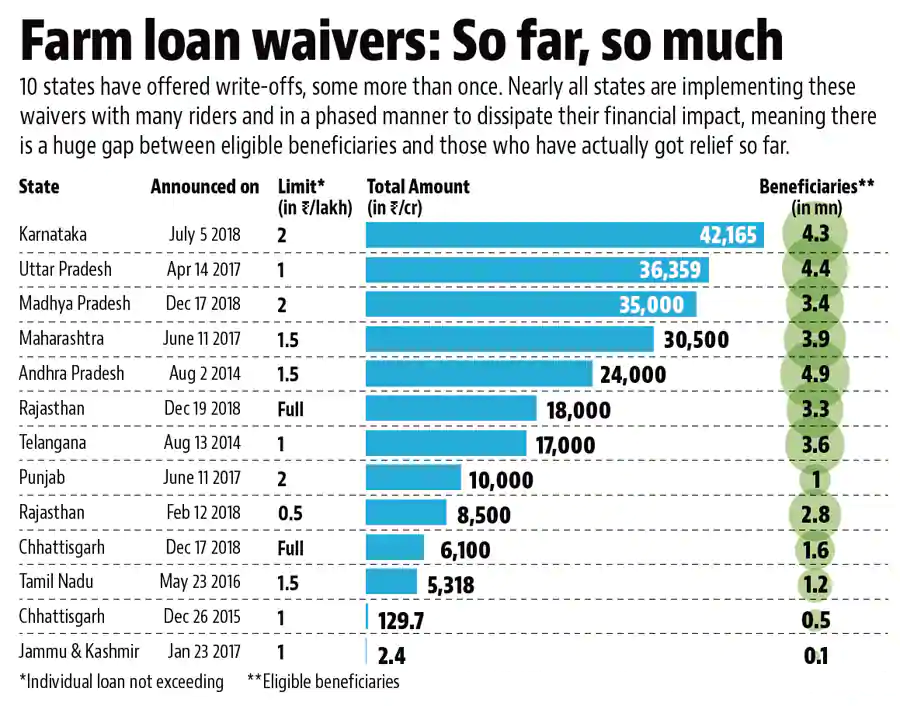
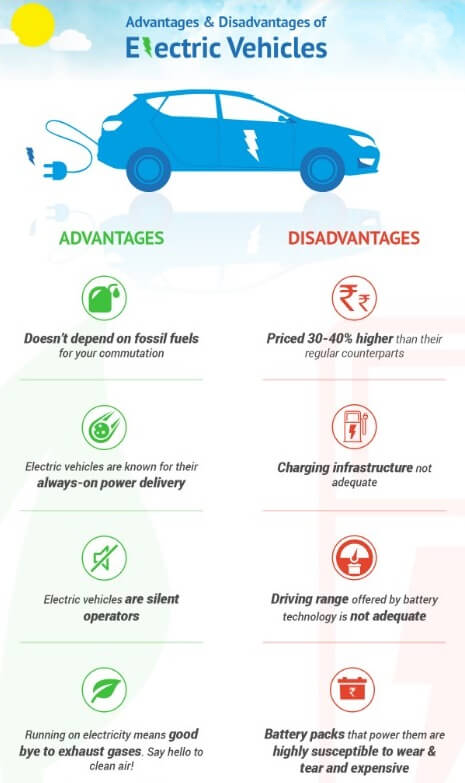
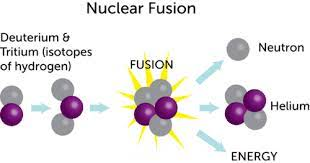
.png)
